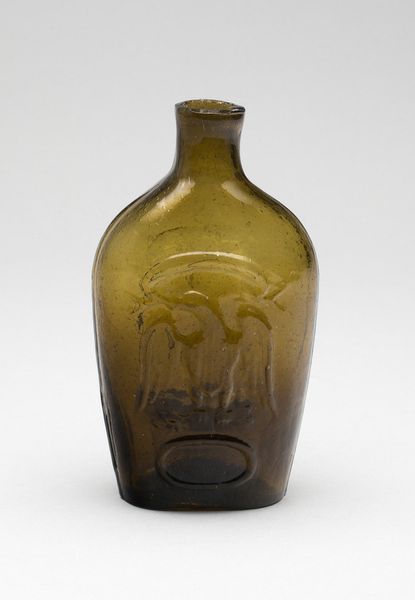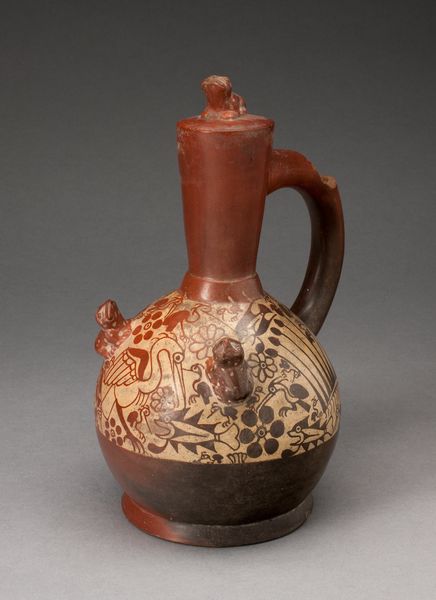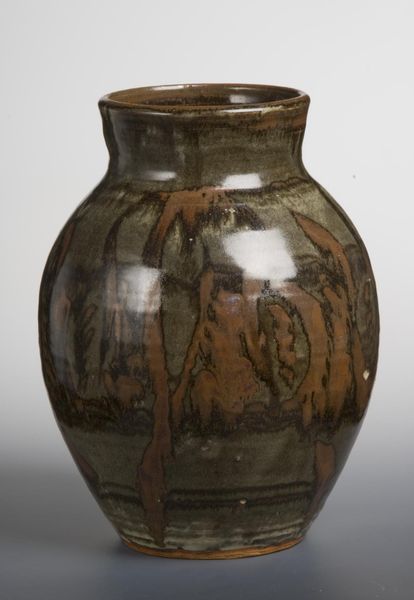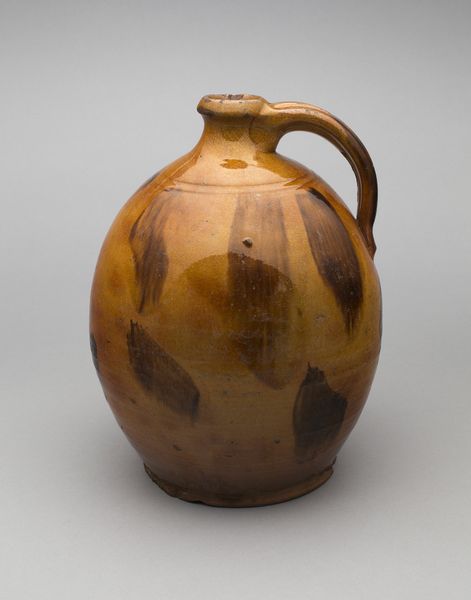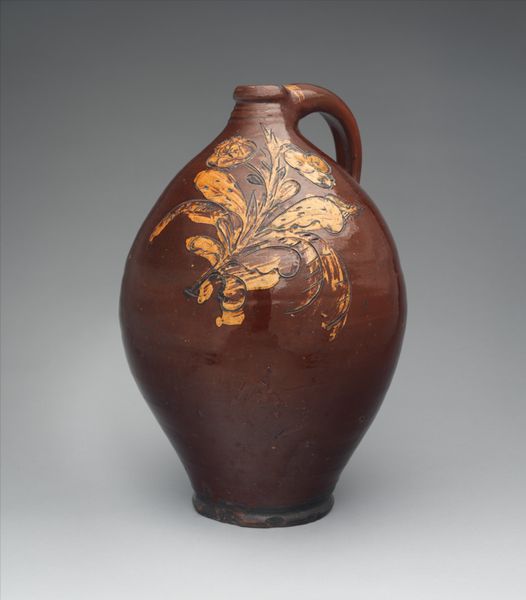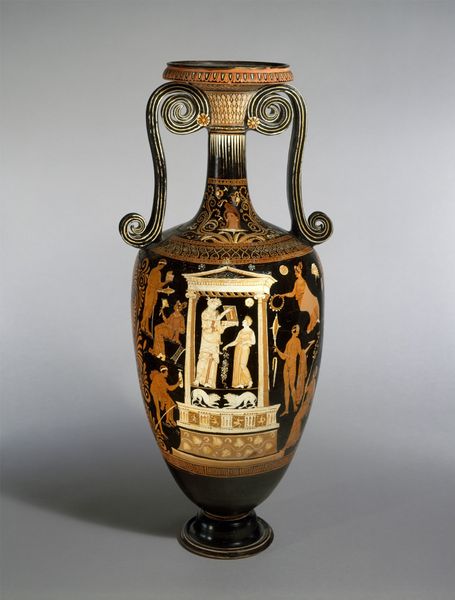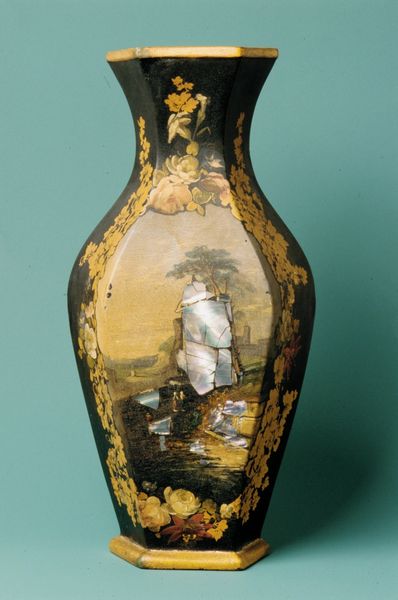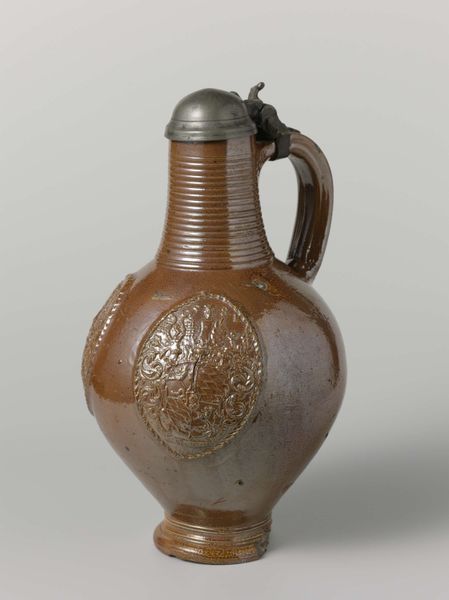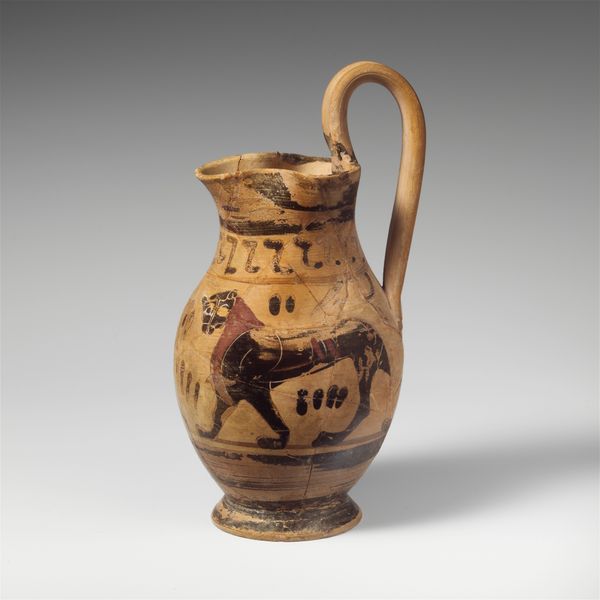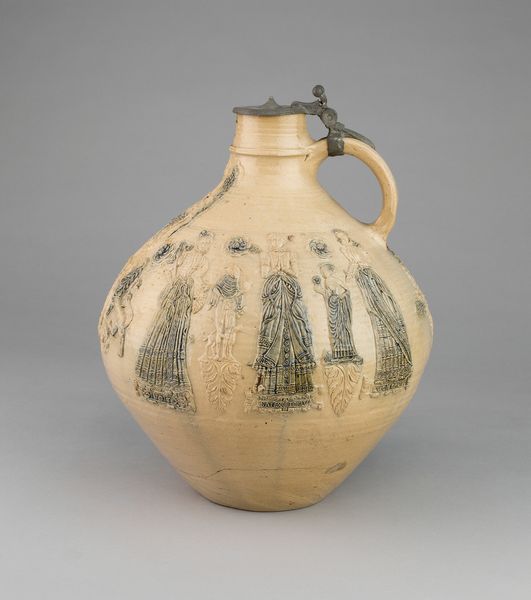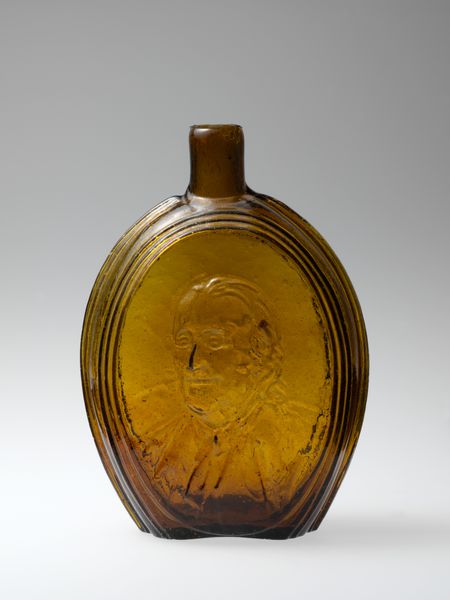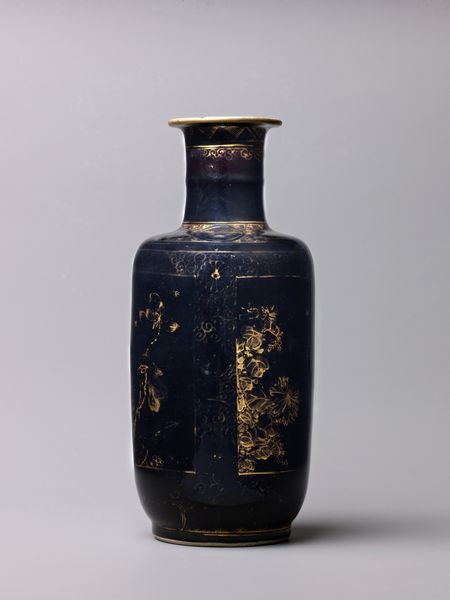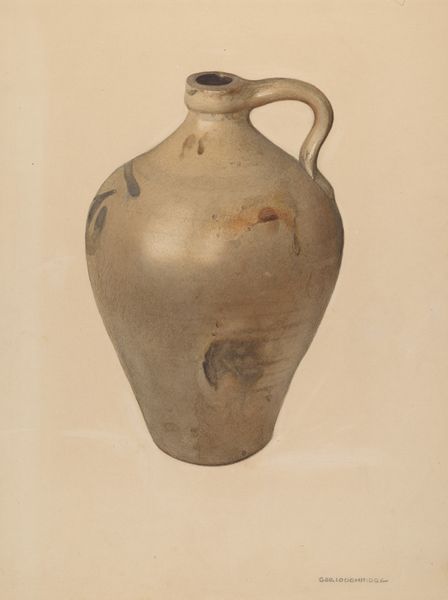
photography, glass
#
photography
#
glass
#
decorative-art
Dimensions: 21.6 × 11.5 × 5.1 cm (8 1/2 × 4 1/2 × 2 in.)
Copyright: Public Domain
Editor: Here we have an olive-green glass flask from between 1859 and 1900, crafted by Whitney Brothers Glass Works. There’s something very elemental and austere about it. How might we interpret the design of this seemingly utilitarian object? Curator: Precisely, let us regard the structure itself. The blown glass presents an ovoid form, interrupted only by the applied handle. Notice how this element repeats and reinforces the curvature of the vessel body itself. Observe also how a slightly darker brown rectangle is embossed with another motif that appears to depict a horse and jockey within a distinct geometry. Editor: So, you're primarily focusing on the flask’s shape and the relationship between its different formal elements, rather than… say, the historical context of glassblowing techniques at the time, or how people would have used the flask? Curator: Indeed. Consider how the play of light filters through the varying thicknesses of the glass, subtly modulating the visual texture and giving depth to the object. Note too how the architectonic nature of the geometry around the animal motif acts to formalize its symbolic intent. Could one say, perhaps, that these formal structures support one another toward a coherent composition? Editor: I suppose you could! It's fascinating to see the depth of consideration given to what I had initially considered a commonplace object. Now, seeing it analyzed in this way makes me appreciate the simple and refined aesthetic that elevates it beyond the mundane. Curator: My hope is simply to invite others to find complexity and rewarding potential within the forms themselves. A glass is more than its materials or contents, wouldn't you say?
Comments
No comments
Be the first to comment and join the conversation on the ultimate creative platform.
